The presentation begins with a reminder that the Nationwide Gallery of Artwork in Washington sits on the “ancestral lands” stolen from the Nacotchtank and Piscataway Indigenous peoples. It’s customary for sure official acts in North America to start with these land recognitions… and it’s particularly becoming when the museum in query is inaugurating The Land Carries Our Ancestors: Up to date Artwork by Native People. That is the primary exhibition that the establishment has devoted to up to date Native American artwork in 70 years.
The exhibition’s curator is artist Jaune Fast-to-See Smith, a member of the confederated Salish and Kootenai tribes of Montana. She has chosen current works made by 50 creators across the themes of Indigenous expression: land, identification, or panorama. There are sculptures, work, collages, stay performances and movies; there are each summary and explicitly political items. Some straight denounce genocide, whereas others play with irony and humor.
“I needed to point out that we’re a residing individuals, with a future… not simply one thing from the previous,” Fast-to-See Smith, 83, explains to EL PAÍS. Again in 1991, she curated Our Land/Ourselves, one other vital exhibition with the land as a key theme. “The choice goals to transcend stereotypes of American Indian artwork, which has historically been understood solely via creative expression with supplies resembling ceramics, materials, or jewellery. These are the sorts of stuff you see in Indigenous artwork galleries in American museums.” She factors out that the exhibition on the Nationwide Gallery is a rejection of the clichés that encompass her communities. “We don’t go round half-naked with feather headdresses. We’re additionally not much less clever than the white man. And we use extra than simply monosyllables.”
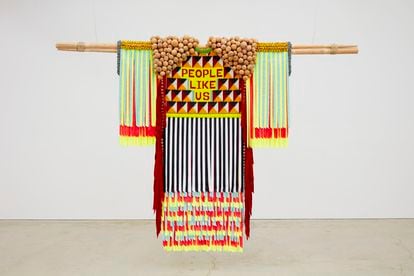
Due to the hassle of our bodies such because the Nationwide Gallery, 2023 has seen larger recognition of Indigenous tradition in the US, throughout the worlds of artwork, cinema, literature and tv. Twice this previous 12 months, Fast-to-See Smith has damaged what she herself describes as “the leather-based ceiling” — a picture that, just like the glass ceiling for ladies, helps her clarify the invisible obstacles that separate Indigenous leaders from skilled recognition.
Along with curating the Nationwide Gallery’s exhibit, within the spring of 2023, Fast-to-See Smith turned the primary Native American artist to have a solo exhibition on the Whitney Museum of American Artwork in New York. Whereas it’s been dedicated to American artwork for 93 years, apparently — till now — it didn’t think about Native American artwork to fall in that class. “All these milestones would have been unthinkable simply two, three, or 5 years in the past,” the artist sighs. “Within the Eighties, after we have been attempting to make it on the New York scene, we did exhibitions in a gallery that they allow us to open within the American Indian Group Home. They gave out meals or bus tickets so that folks may return to their reservations. And what? We by no means had an artwork critic from The New York Instances or any specialised journal present up.”
About 80% of the 5 million Native People in the US stay outdoors the reservations, which they have been pushed into by the savage treaty colonialism that was primarily based on violence, deception and damaged guarantees
Those self same institution media retailers now have a good time the belated recognition of pioneers like her or G. Peter Jemison, of the Seneca nation, in upstate New York. After together with him in an exhibition, MoMA has simply acquired 5 of the emblematic drawings that he made within the Eighties on paper luggage — a superb reflection on the expertise of displacement within the large metropolis. About 80% of the 5 million Native People in the US stay outdoors the reservations, which they have been pushed into by the savage treaty colonialism that was primarily based on violence, deception and damaged guarantees.
The Nationwide Gallery has additionally bought a portray of a sunflower by Jemison, so as to add to its small assortment of native artwork. This course of started in 2020, with the acquisition of Goal (1992), a collage by Fast-to-See Smith that criticizes the trivialization of the tragedy of her individuals. “It’s honest to acknowledge that we’re very late. However that is solely the start of the very mandatory strategy of updating our collections,” guarantees Molly Donovan, curator of up to date artwork on the establishment.

The exhibition started to be put collectively the identical 12 months that George Flord was murdered by a white police officer. The killing of the African-American man unleashed a wave of anti-racist protests all through the nation within the midst of a pandemic. The Black Lives Matter motion gained power. It was additionally a shock take a look at for American cultural establishments, which rushed to do their pending homework by way of illustration of minorities, making room for them of their packages, or hiring curators who hailed from completely different backgrounds.
Maybe no sector has devoted itself as a lot to this process because the artwork sector, all the time desperate to establish (and make worthwhile) no matter is new, particularly if it’s a part of a social trigger. This goes for each the market — as was seen on the current Artwork Basel Miami Seashore honest, during which the seek for the subsequent large native artist was a recurring matter of dialog amongst gallery homeowners and collectors — and for the establishments.
For the primary time in historical past, the creator chosen to characterize the US on the 2024 Venice Biennale can be Indigenous: Jeffrey Gibson. Gibson, a 51-year-old Choctaw-Cherokee artist, has simply revealed An Indigenous Current, a kind of books destined to mark an period. It affords an outline of up to date artwork produced by some members of the 574 federally-recognized tribes. It’s additionally a refutation of some preconceptions about them. This Indigenous current — in line with Harvard professor Philip DeLoria — “goes past survival and resistance. It speaks of a spirit of wit, irony, bravery, endurance, and religion sooner or later.”
“It’s simpler for younger individuals as we speak to exhibit their work outdoors the normal circuits of native artwork,” Gibson defined final week in an e mail. “Some come from households which have devoted themselves to artwork, however above all, it’s vital {that a} observe of Indigenous criticism and thought has emerged, higher geared up to decipher [their work]. This didn’t exist after I began. There have been unfastened opinions, however not a structured mind-set about Indigenous parts in artwork.”
Native American tradition additionally made it to the multiplex in 2023, because of Killers of the Flower Moon, a movie during which Martin Scorsese recounts the violence suffered by the Osage of Oklahoma, when the whites determined to steal the oil they discovered on their lands. The director sought recommendation from the local people and solid Indigenous actors. The consequence has garnered reward amongst American Indian viewers for rescuing a tragedy unknown to most people. Nonetheless, there was criticism about how the movie focuses on characters performed by Robert DeNiro and Leonardo DiCaprio.
One other audiovisual milestone has been the third season of Reservation Canines. Created by Taika Waititi and Sterlin Harjo, it’s the primary sequence with a wholly Indigenous writing room. Lots of the actors are additionally Indigenous. With humor, it recounts the misadventures of a bunch of skeptical younger individuals from the Muscogee Nation, who haven’t but assimilated their very own historical past. Utilizing irony, it dismantles a few of the stereotypes surrounding reservations, whose inhabitants take pleasure in restricted sovereignty below the supervision of the federal Bureau of Indian Affairs. The episodes additionally cleverly play with one of many conventional clichés within the illustration of natives in fiction: the concept of the Indigenous being in touch with the supernatural.
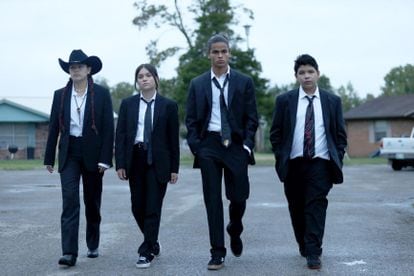
This was additionally the 12 months {that a} Yale College professor — Ned Blackhawk, of the Te-Moak individuals of Nevada — received the Nationwide E book Award for nonfiction with The Rediscovery of America. The guide reexamines 5 centuries of American historical past from the attitude of Indigenous wrestle, survival, and resurgence. It takes a continental strategy: the story doesn’t start with the American Revolution of 1776, and even in 1619, when the primary ships full of enslaved individuals reached the coast of Virginia. Slightly, Blackhawk begins the work in 1492, with the arrival of Columbus.
Blackhawk, who describes the expertise of going to New York to select up the award as “transformative,” belongs to a technology of teachers who, as he explains in an interview with EL PAÍS, are watching “how the mythologies of American historical past start to crumble.”
“Some discuss Indigenous energy, however I attribute [this change] to the truth that the US is gaining range and the way we’re witnessing a racial and non secular reconfiguration,” he provides. “Whites will turn out to be a minority sooner or later within the twenty first century. And my guide aspires to take part in that broader nationwide dialog.”
The historian considers that this second is “applicable” for his tradition. “On the subsequent Oscars, we may see a local actress win (Lily Gladstone, for Scorsese’s movie). There are TV sequence and novels that talk from our expertise, whereas consideration is being paid to native style and design. We even have one in every of our personal within the president’s cupboard for the primary time, Secretary of the Inside Deb Haaland (of the Laguna Pueblo of New Mexico),” he notes.
Blackhawk factors to 2 titles from the late Sixties that have been pioneers in describing the Native American expertise within the up to date world: the essay Custer Died for Your Sins, by Vine Deloria Jr. of the Sioux individuals, and the novel Home Product of Daybreak, by N. Scott Momaday. Of Kiowa origin, Momaday received the Pulitzer Prize for the guide in 1969.
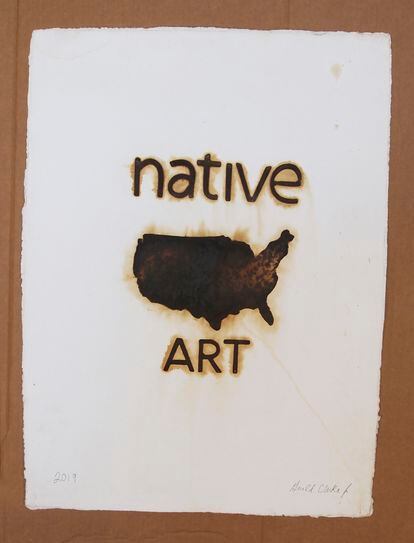
Gerald Clarke Jr.
The celebrated literary distinction eluded native writers from then all the way in which till 2021, when novelist Louise Erdrich of the Turtle Mountain Band of Chippewa Indians received it with The Night time Watchman, a reconstruction of her grandfather’s political wrestle for the popularity of Indigenous rights. That very same 12 months, Natalie Diaz (Mojave) received the Pulitzer within the Poetry class. And, the next 12 months, Raven Chacón, a Diné artist and composer, additionally included within the Nationwide Gallery exhibition, made historical past by profitable the Pulitzer Prize for Music.
Erdrich — comfortably put in within the American canon — is without doubt one of the most revered fiction authors within the nation, together with her books translated into many languages. Amongst her followers, many have proven vitality within the genres of science fiction (Rebecca Roanhorse) or horror (Stephen Graham Jones). Tommy Orange, a member of the Cheyenne and Arapaho tribes of Oklahoma, stands out as properly. His debut novel There There (2018) was praised for specializing in the “city Indians,” with a narrative that takes place in Oakland. He has promised {that a} sequel can be revealed in 2024.
“We’ve been transferring for a very long time, however the earth strikes with you, like reminiscence,” writes Tommy Orange in his novel ‘There There’
The novel has a prologue during which Orange displays on swapping the reservation for town, “between buildings, beltways and vehicles,” and doing so by alternative or by drive (“as a part of the Indian Resettlement Act”). “We’ve been transferring for a very long time,” he writes, “however the earth strikes with you, like reminiscence.”
Pleasure Harjo, of the Muscogee Nation, is the primary Native American to be named poet laureate of the US (she served from 2019 to 2022). She elaborates on this fixed movement within the prologue to the anthology When the Gentle of the World Was Subdued, Our Songs Got here By way of: A Norton Anthology of Native Nations Poetry. Printed in 2020, it’s essentially the most full evaluation of American Indian poetry up to now: it contains 161 authors from 90 nations, with verses dated between 1678 and 2019. “We start with the earth,” Harjo writes. “We start with the land. We emerge from the earth of our mom and our our bodies can be returned to earth. We’re the land. We can’t personal it, regardless of any proclamation by paper state.”
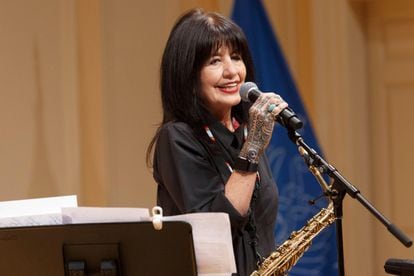
The choice was made by “at the least 16 native poets,” as one in every of them, the Muscogee author Jennifer Elise Foerster, clarified by e mail. They adopted a geographical criterion to cowl a panorama so huge that it discourages speaking about Native People as being homogeneous: in any case, some 4 thousand miles separate the Inuit individuals of northern Alaska from the Seminole individuals of southern Florida. “[The anthology] doesn’t inform a singular story, in the identical manner that the poets of native nations aren’t a singular individuals. It’s, reasonably, a wide range of poems. It’s a group that challenges the nation’s literary creativeness to reimagine our tales and people of our nations, individuals, and realities primarily based on too many unrecognized tales, songs, and peoples which were on the root of this nation and that proceed to flourish. So many important voices have been overlooked… this could reveal the superb richness and depth of the poetics of native peoples,” Foerster says.
The considerations of the up to date writers who made the minimize — resembling local weather change, the destruction of nature, intergenerational trauma, or the failures of capitalism — largely coincide with these of the younger artists chosen for the Nationwide Gallery by Fast-to-See Smith. The exhibition’s catalogue argues that “far more than [land acknowledgments] are wanted to appease Native People for what they’ve misplaced over the course of generations.” As a spot to start out, the artist tells EL PAÍS, “they can provide us again the brains of our households.”
Fast-to-See Smith is referring to the truth that dozens of American establishments hold greater than 100,000 stays of Native People, in addition to sacred objects looted all through the nation. In 1990, the Native American Graves Safety and Repatriation Act ordered their return. However greater than 30 years later, many tribes are nonetheless ready.
In Washington — the ancestral land of the Nacotchtank and Piscataway — the Smithsonian nonetheless preserves tens of 1000’s of those stays, along with a very macabre assortment: 250 brains that an anthropologist named Ales Hrdlicka — a person obsessive about race — gathered within the first half of the twentieth century.
To observe, learn and go to:
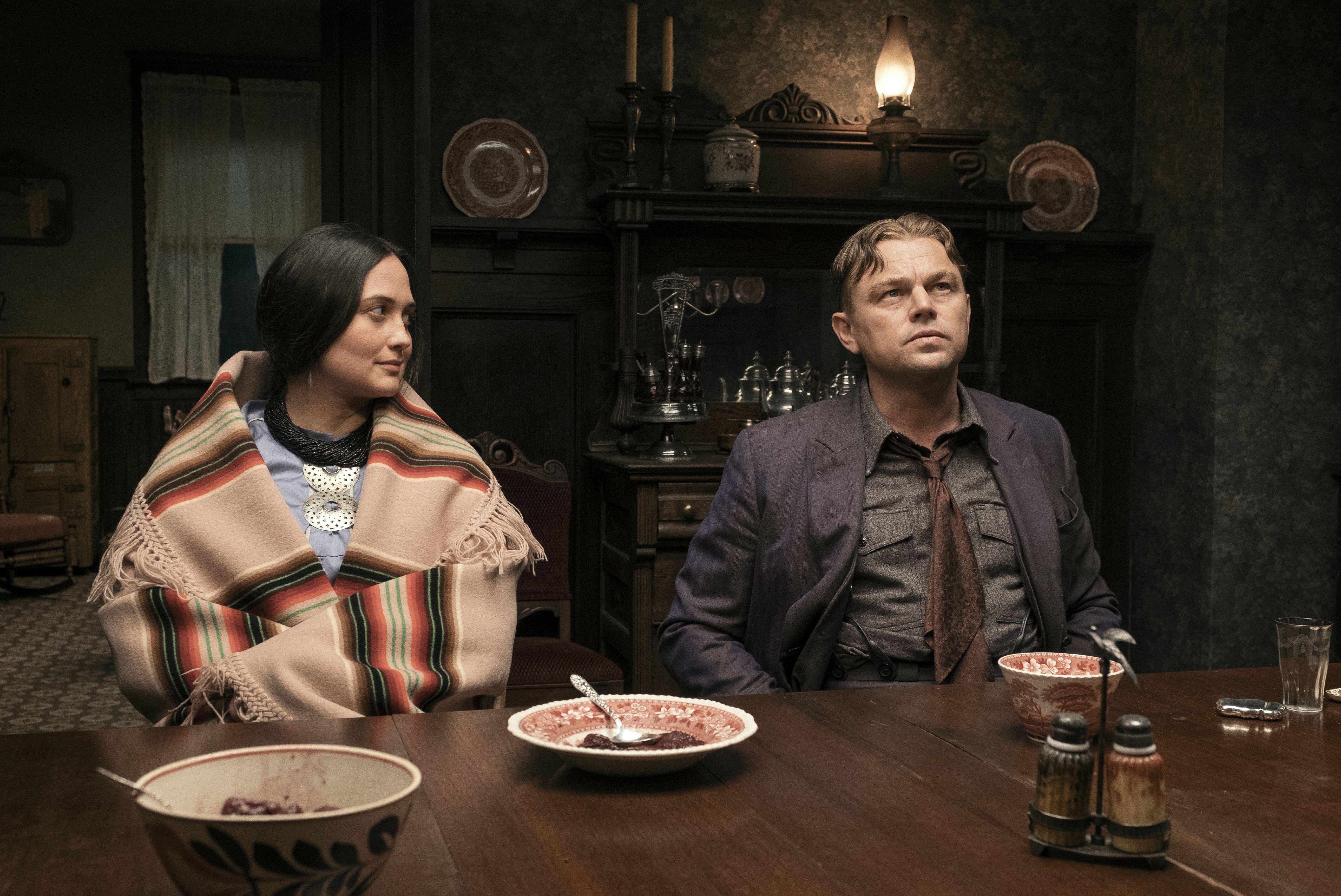
The Land Carries Our Ancestors: Up to date Native American Artwork. Exhibition. Nationwide Gallery of Artwork. Washington. Till January 15.
An Indigenous Current. Jeffrey Gibson. Artwork guide. DelMonico Books, 2023.
Killers of the Flower Moon. Martin Scorsese, 2023. Film.
Reservation Canines. Taika Waititi and Sterling Harjo. Collection. Disney + (three seasons).
The Rediscovery of America. Ned Blackhawk. Non-fiction guide. Yale College Press, 2023.
The Night time Watchman. Louise Erdrich. Novel. HarperCollins, 2020.
There There. Tommy Orange. Novel. Alfred A. Knopf, 2023.
My Coronary heart is a Chainsaw. Stephen Graham Jones. Novel. Gallery/Saga Press, 2021.
Loopy Courageous. Pleasure Harjo. Memoir. W. W. Norton & Firm, 2012.
When the Gentle of the World Was Subdued, Our Songs Got here By way of: A Norton Anthology of Native Nations Poetry. Poetry anthology. W. W. Norton & Firm, 2020.
Join our weekly publication to get extra English-language information protection from EL PAÍS USA Version

/cloudfront-eu-central-1.images.arcpublishing.com/prisa/YDNRBGQCRRBBDBZVIVAIIRIAOA.jpg)